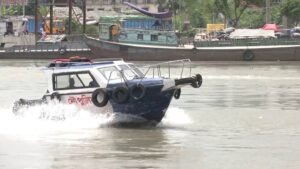This content is restricted to site members. If you are an existing user, please log in. New users may register below.
Border Guard Bangladesh Strengthens Myanmar Border Security

Reading Time: 3 minutes The Bangladesh–Myanmar border, stretching some 270 kilometres, has become a central point of national security concern due to rising instability in Myanmar’s Rakhine State. This instability is driven by the armed insurgency of the Arakan Army (AA) and the ongoing humanitarian crisis involving the Rohingya population. These factors have created a complex threat environment for Bangladesh and compelled the Border Guard Bangladesh (BGB) to implement comprehensive modernisation and operational enhancement programmes to meet both immediate and long‑term challenges. The threat landscape along this frontier is multifaceted. The Arakan Army’s expansion in northern Rakhine State has significantly altered security dynamics. By establishing control over key border sectors, the AA has created areas used for logistics, recruitment, and illicit trade, including the smuggling of arms, narcotics, and other contraband. The porous nature of the Naf River and surrounding terrain facilitates unauthorised crossings and infiltration by armed groups. Notably,

